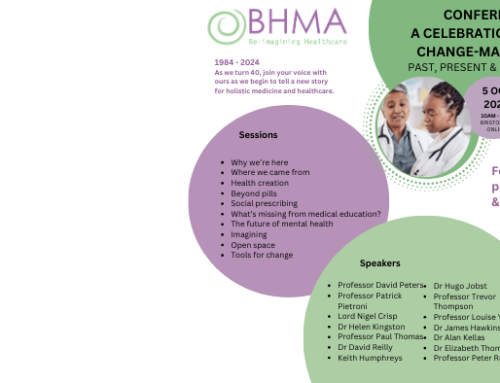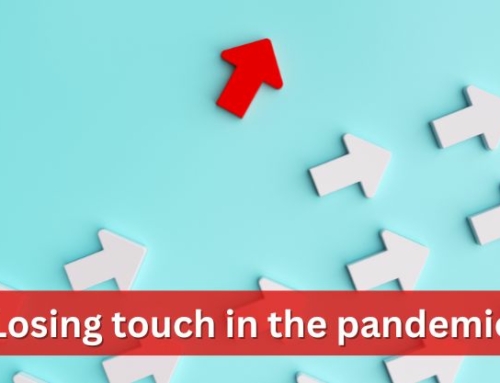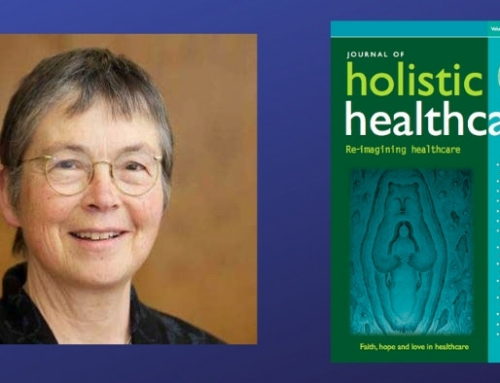RCGP Nature Immersion 2020 Launch backed by BHMA
There is growing evidence for the benefits of Nature contact in offsetting high levels of stress, ‘Directed Attention Fatigue’, information overload, and excessive ‘screen time’. The pilot programmes at Hazel Hill Wood – formally evaluated by Westminster Centre for Resilience – showed statistically significant impacts and improvement in mood. Watch this space for details of the April event for GPs. The first Nature Immersion course for GP’s & GP Trainees will be running on Dartmoor in June 2020
Learning super- resilience from nature: systemic responses to systemic overload
Article by Alan Heeks – Chair, Hazel Hill Trust
– from our Spring 2019 Journal Nature Connections
Summary:
Picture this scene: deep in a Wiltshire wood, a group of hospital doctors are sitting around a campfire. It’s dark, and there’s profound silence in the forest around them, broken by owls calling nearby. Slowly, the doctors take the risky step of opening up in front of colleagues: talking about feelings of overwhelm, exhaustion, the pressure to be superhuman that they put on themselves, and that they sense from patients. It’s tempting to be heroic, but where is the place for emotions and uncertainty?
My definition of resilience is the capacity to thrive and grow in the face of challenges, rather than merely coping or surviving. The seeds of this creativity often grow from adversity. Overstress and burnout are so severe in many parts of our health service that they simply have to be talked about. There’s some hope in this new openness, and a willingness to find new ways to address the issues. Perhaps resilience issues in the health sector are an indicator of wider distress, for we now face huge ecological and economic problems, and the resources to address them are too few. Similarly though sweeping systemic changes are now needed in healthcare, short-term mitigation is a necessary focus. Systemic solutions may follow, as I believe will be apparent not just in healthcare but for the whole population within the next 5 to 10 years.
Super-resilience: what and how
I coined the term super-resilience to highlight the radical step-up in resilience skills that people need if they are to adapt and thrive in the face of the overwhelming pressures we can expect to face in the years ahead. Systematic approaches to personal super-resilience will need to be easily understood and applicable in everyday life and work. They will have to be readily accessible and not over- dependent on megabuck funding from government or other magical sources.
We are piloting woodland resilience immersives for health professionals at Hazel Hill Wood. These programmes have been jointly created by David Peters of Westminster Centre for Resilience, Daghni Rajasingam of Guys and St Thomas’, and myself and the team at Hazel Hill Trust, the charity which owns and runs Hazel Hill Wood. Although it is early days, we hope they may become a catalyst for growing super-resilience.
David and Daghni have been leading resilience programmes in the health sector for many years. Having realised the need for more powerful, catalytic interventions than could be achieved by a few hours in a hospital training room. Suspecting that a radical change of venue would inspire new perspectives, they sought out knowhow and our off-grid residential venue as a place to explore a nature immersion resilience retreat.
Hazel Hill Wood: the back story
In my 20s and 30s, I had a successful business management career in the building materials sector. With the capital it gave me I set up two educational charities, which laid the foundations for our recent work in the health sector. Through the 1990s, I led the creation of a 130-acre
organic farm and education centre in Dorset (www.magdalenfarm.org.uk). As I slowly awoke to the analogies between organic cultivation and human sustainability, I applied these ideas to development work in other organisations. You can learn more in my first book, The Natural Advantage: renewing yourself.
More recently, I have used these analogies in resilience programmes at Hazel Hill Wood, a 70-acre conservation woodland and residential centre near Salisbury. One major focus has been our Nourishing the Front Line programme. Participants have included GPs, hospice and private care staff, local authority and charity managers, plus counsellors and trainers.
Does nature immersion have credentials?
However inspired you might be about a woodland immersive, there’s probably going to be a sceptical counterweight somewhere in your organisation, who will ask, ‘So you seriously want to spend two days and £X of my budget to sit in a wood, round a campfire?’ I can offer two good responses to the sceptics. The first is the substantial body of mainstream research into the benefits of nature contact. There is a good overview in the book Your Brain on Nature, by physician Eva Selhub and naturopath Alan Logan (2014). While much of this research covers benefits to the general population, it also highlights some issues especially relevant for medics, for example directed attention fatigue (DAF). One of the biggest changes many medics have described to me is the relentlessness of their work: though working under intense pressure at times, they have virtually no opportunities for recovery.
The best antidote to DAF and long hours spent at screens is more experiences of involuntary attention.
Researchers describe a key benefit of exposure to nature as its ‘intrinsic fascination’, the way it relaxes our usual intensely directed focus. And time in nature is also proven to induce positive feelings which can offset the impact stress and anxiety.
The second response to sceptics is more by way of a cogent argument whose premises establish probable (even if not definitive) support for the conclusion. Medics easily grasp that people are far more subtle and complex than machines or computers; that over-work and burnout are serious a system-wide problems; that they have something to do with how we think about and organise healthcare, and therefore that these dificulties won’t be resolved using the sorts of thinking that gave rise to them. This establishes a reasonable case for looking ‘outside the box’. In which case, if we are seeking new non-mechanistic analogies for human wellbeing, what can we learn by looking at resilient ecosystems?
Early evidence accruing from our pilot groups with hospital doctors has been captured in an interim evaluation by the Westminster Centre for Resilience. This showed statistically significant improvements in mood overall and for a range of feelings including fatigue and confusion, as well as a rise in esteem-related effects.
Here are three quotes from the qualitative section of this evaluation:
‘Most doctors went into the experience with their eyes fairly closed to the benefits of nature, which contrasted dramatically to the final evaluation where accessing nature was seen as “an absolute essential”’.
‘There was a real sense of collaborative action, with doctors all wanting to create systems at work which would reinforce their experiences at Hazel Hill Wood.’
‘In conclusion, this report has found the intervention to be effective, feasible, appropriate, and accepted by the doctors.’
And some quotes from the doctors:
‘I’m taking away recharge, vulnerability, warmth and connection and sharing. I’ve found my inspiration again, I hope to come back again.’
‘This was the best mental spa I’ve ever been to.’
‘What was good was that you didn’t tell us what to do, you gave us multiple ways to choose our own. We are not used to training like that.’
So what happens in a woodland resilience intensive?
We can tailor these programmes to the needs of participants. For the pilots, the structure we pre-planned worked well, and can be treated as indicative of the overall content.
1 Arrival and orientation
Some participants may be uneasy coming to a residential in a wood. We helped them to settle by showing them their room, giving them a tasty lunch, and briefing them on practicalities.
2 Introductory session
This includes the aims of the whole workshop, agreeing ground rules like confidentiality, and time enough for short personal introductions. The key part of this session is a consult with the group on the proposed elements of the programme, with scope for participants to set their priorities.
3 Conservation session
By three o’clock we get everyone outside, doing simple physical tasks that help sustain the ecosystem of the wood. This has proved a highly valuable element in the whole process. It creates a deep re-orientation away from working with ailing humans. Working together even if only for an hour or so in a resilient, healthy natural system, on physical tasks with low mental demands and a clear, immediate outcome seems to help doctors drop many layers of stress. And the scope for informal conversation during the tasks start the process of reflection.
4 Free time/play time
The aim of this late afternoon slot was further decompres- sion. We gave participants an hour of free time to use as they wished. Some wanted to sit quietly among the trees, or have a walk and a chat with a colleague. Some chose to play vigorous games like hide and seek, or the evolution game. I have realised that games can be a very time-effi- cient way to de-stress, and I encourage more doctors to enjoy them!
5 Evening campfire
Having had time for showers and supper together around our huge table, the group gathers around a fire in the heart of the wood. The combination of the natural setting, the time of day, and the previous processes, enables some deep personal sharing and reflection. It was striking how many doctors at this point said they had nowhere to go with difficult stressful feelings, doubts over a patient decision, or a conflict with a colleague or boss; or who felt that admitting about such feelings to other medics would undermine their credibility and erode their confidence. Family and friends on the other hand would be burdened by being unloaded on, or as ‘non-medics they wouldn’t understand’. As our evening around the fire unfolded, the sense of mutual understanding and support was palpable. There was great relief in having difficult feelings witnessed in a group of professional peers, and in realising that others felt the same.
6 Morning session one
After breakfast, we began with a check-in, which showed that the catalytic effect we aimed for with day one had happened. The prevailing mood when the doctors arrived at the wood was one of tensing up and barely getting by. Now, there was a shared sense that positive change was possible, and a thirst for fresh approaches. This teed up the main part of this session: a guided walk round the wood, to experience how analogies with this resilient ecosystem could help in daily work (see more below).
7 Morning session two
The aim here was to learn more simple resilience tools, and to practice applying them to typical stresses at work. These tools were drawn from mindfulness, and from our frontline programmes at Hazel Hill. We ended the morning with some free time for reflection, solo or with others.
8 Concluding session
After lunch, and formal evaluation questionnaires, we gathered round a campfire for a debrief and discussion on how to take this forward. Participants were enthusiastic and creative about finding ways to root nature-based resilience in their own work and their team’s. These topics are covered further below.
The seven seeds of natural happiness
In the guided walk around the wood, we usually explore three of the seven principles in the model I have evolved from 20 years of nature-based wellbeing and resilience programmes. You can find a summary of the whole model at www.naturalhappiness.net, and it is the basis for my first book The Natural Advantage: renewing yourself.
In the limited space available here, I will describe one of the seven principles: composting. In a cultivated organic ecosystem (such as a farm or market garden), waste is recycled to provide the main source of future growth. By contrast, on mainstream farms, growth is driven by artificial fertilisers which deplete the soil’s vitality and resilience, and build up polluting residues. All this has parallels for human ways of working.
To demonstrate this principle, I take people to an area of conifers. As we stand on a carpet of rotting pine needles, I explain how composting transforms plant and animal waste into the fuel for future growth. I ask, ‘what could you do with the waste matter of negative feelings, anxious thoughts, unresolved conflicts?’ And I demonstrate a couple of five-minute ways to start this composting process, such as deep continuous breathing, or ‘angry walking’. Bigger issues need more time, and maybe professional help, but the principle of ‘compost the crap’ still applies.
Participants and organisers of these intensives know there’s a large gap between a good workshop, and sustained change. As our time at the wood neared its close this gap prompted lively conversations. This is still work in progress, but here are some of the promising threads:
Nature contact: readers may know of various studies showing that some form of nature contact helps patient recovery rates. A view of outdoor greenery has benefits, or a pot plant or even a picture. It’s surely logical that medical staff will also benefit, and this is a pretty easy step to take.
Green moments: the lack of time for any kind of self-care is a major challenge, but neurobiology supports the view that even brief interventions help. A few deep breaths can reduce stress, and a few moments of mindful centering can mitigate an upsetting episode. But when? Three suggestions were while walking along a corridor, or scrubbing up before an operation, even when using the loo.
Quality interactions: a recurring theme was the erosion of settled work teams, and a loss of rapport and support. One benefit of the woodland intensives was to spark proactive responses in place of mere coping. If one individual, even a junior in the team, starts a habit of positive appreciation for colleagues, it creates an upward spiral. Analogies between ecosystems and work teams can help: for example, valuing symbiosis, diversity, and wild margins.
Systemic view: it’s clearly easy for medics to be overloaded by responding to the many immediate demands they face. To switch into a mindset of systemic initiatives, cultivating improvement, will need time, ideally in a non-corporate venue, and fresh stimuli. Our wood- land immersions by ticking all these boxes, clearly have generated motivation and a range of practical ideas which hopefully will take root in the work setting.
Whatever next?
The early signs are encouraging. Our overall aim in 2019 is to explore ways to build on this start and to propagate it. The main elements envisaged for this year are:
• Further pilot programmes: we aim to run several intensives this year, including one for GPs in June, and hopefully one or two for the mental health sector.
• Link to ongoing processes: ideally there would be some regular follow-up and support process in the workplace, for example a monthly two-hour session. So far, this has proved hard to organise.
• Longitudinal evaluation: Westminster Centre for Resilience aims to assess the benefits of these programmes after three and six months.
• Funding: so far, funding has come from an improvised range of sources. During 2019, we hope to find more stable funding which could help expand the programme in 2020.
• Propagation partners: Hazel Hill Trust is a small charity which has so far only run programmes at its own venue. However, one aim of the Trust is to share its expertise and encourage other venues to develop nature-based programmes. During 2019, we hope to find partners who can roll out similar short immersive resilience retreats in 2020.
Innovations often look bizarre until the needs they meet become overwhelming. We may be close to that tipping point. Woodland resilience intensives have grown from long years of development by two sound organisations, and like a tree, the roots have to establish before there can be outward growth.
Reference
Selhub EM, Logan AC (2014) Your brain on nature: the science of nature’s influence on your health, happiness and vitality. Mississauga, Canada: John Wiley.
For info on Woodland Resilience Intensives, including
the June programme for GPs, see www.hazelhill.org
To receive occasional email updates on this work, or to contact Alan, use data@workingvision.com
For more on Alan’s Seven Seeds model, see www.naturalhappiness.net
About Alan:
After a successful business management career, I created two residential centres where people can deepen their contact with nature. I am chair of the charity which runs one of these, Hazel Hill Wood in Wiltshire. In recent years, my main work passion is around building resilience for the major challenges we all face in the future. I have realised that a resilient, cultivated ecosystem is a powerful model for human resilience, and it has been very satisfying to see how this approach can help health professionals.








